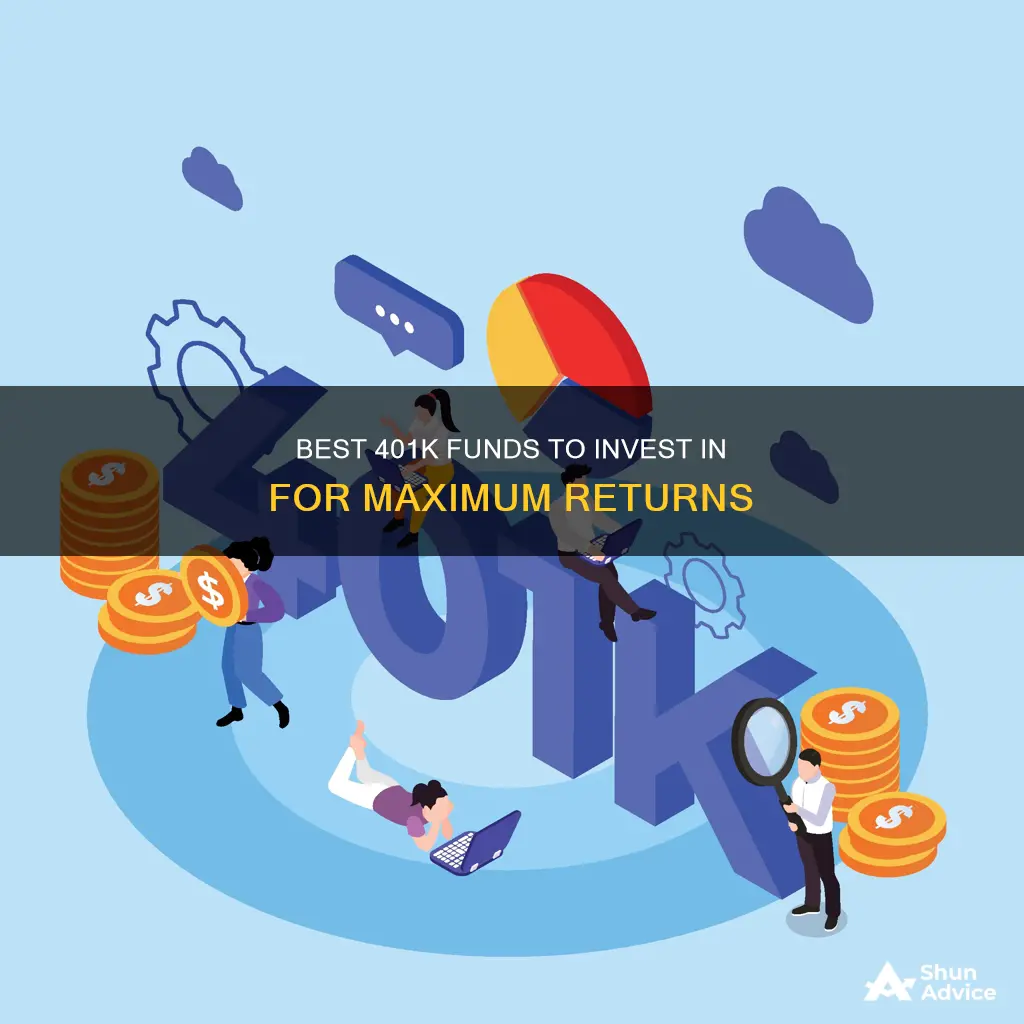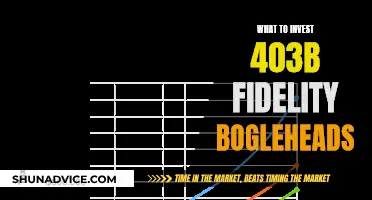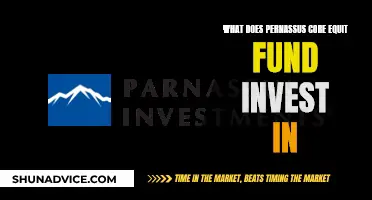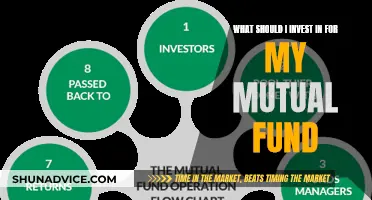
Choosing the right funds to invest in for your 401(k) can be a challenging task. There are a variety of factors to consider, such as risk tolerance, age, fees, and diversification. Here is an overview of some key considerations to help you make informed decisions about your 401(k) investments.
Firstly, it is essential to understand the different types of funds offered in 401(k) plans, which typically include mutual funds and, in some cases, exchange-traded funds (ETFs). These funds range from conservative to aggressive and include categories such as balanced, value, or moderate funds. It is crucial to assess your risk tolerance and investment horizon when selecting a fund type. Younger investors with a higher risk appetite may opt for aggressive growth funds, while older individuals approaching retirement may prefer conservative or balanced funds.
Additionally, fees play a significant role in the performance of your 401(k) investments. It is generally advisable to avoid funds with high fees, as they can eat into your returns over time. Actively managed funds tend to charge higher fees due to the research and management involved, while index funds, which track a specific market index, usually have lower expense ratios. Keeping fees low can significantly impact your long-term investment growth.
Diversification is another critical aspect of investing your 401(k). Diversifying your portfolio across various asset classes, sectors, and fund types can help mitigate risk and capture returns from different areas of the market. Most 401(k) plans offer a range of stock and bond funds, allowing you to allocate your investments according to your risk tolerance and goals. It is generally recommended to have a mix of U.S. large-cap, small-cap, international, and emerging market funds for equity exposure, and a total bond market fund for fixed-income investments.
Lastly, it is essential to monitor your 401(k)'s performance and rebalance your portfolio periodically. Selling high-performing assets and reinvesting in underperforming ones can help maintain your desired asset allocation. While it may seem counterintuitive, this strategy ensures your portfolio aligns with your financial goals and risk tolerance.
In conclusion, investing your 401(k) effectively requires careful consideration of fund types, fees, diversification, and periodic rebalancing. By understanding these factors and making informed decisions, you can maximize your retirement savings and work towards a comfortable financial future.
| Characteristics | Values |
|---|---|
| Large-cap 401(k) investment | Fidelity 500 Index (FXAIX) |
| Mid-cap 401(k) investment | Vanguard Mid-Cap Index Institutional (VMCIX) |
| Small-cap 401(k) investment | Vanguard S&P Small-Cap 600 Index (VSMSX) |
| Bond 401(k) investment | PIMCO Income Institutional (PIMIX) |
| Target-date 401(k) investment | American Funds 2055 Target Date Retire R6 (RFKTX) |
| Conservative Fund | High-quality bonds and other safe investments |
| Value Fund | Solid, stable, undervalued companies |
| Balanced Fund | Mix of value stocks, safe bonds, and risky equities |
| Aggressive Growth Fund | High-risk, high-reward |
| Target-Date Fund | Diversified portfolio that becomes more conservative over time |
| Index Funds | Lowest fees |

Large-cap funds
When considering large-cap funds for your 401(k), it's essential to evaluate the fund's expense ratio, historical performance, and the level of diversification it offers. Here's a detailed guide to help you make informed decisions about large-cap funds for your 401(k):
Understanding Large-Cap Funds
Evaluating Large-Cap Funds for Your 401(k)
When selecting large-cap funds for your 401(k), there are several key factors to consider:
- Expense Ratio: The expense ratio represents the annual fees charged by the fund, expressed as a percentage of your investment. It's crucial to minimise these fees because even a slight increase in expenses can significantly impact your long-term returns. Look for large-cap funds with low expense ratios, ideally below 0.5% or even lower.
- Historical Performance: While past performance doesn't guarantee future results, it can give you a sense of how the fund has navigated different market conditions. Evaluate the fund's performance over various time frames, especially during challenging economic periods.
- Diversification: Diversification is a risk management strategy that involves spreading your investments across different assets to reduce the impact of any single investment on your portfolio's overall performance. When considering large-cap funds, ensure they provide adequate diversification within the large-cap space and complement other funds in your 401(k) portfolio.
Recommended Large-Cap Funds for Your 401(k)
- Fidelity 500 Index (FXAIX): This mutual fund tracks the S&P 500 index, which comprises 500 of the largest U.S. companies. With an expense ratio of only 0.015%, it is one of the cheapest options available. However, keep in mind that over a quarter of the fund's portfolio is in tech stocks, so ensure you balance it with funds offering exposure to other sectors.
- Vanguard Mid-Cap Index Institutional (VMCIX): This fund tracks the CRSP U.S. Mid Cap Index, representing companies that account for 70-85% of U.S. market capitalisation. While it has a low expense ratio, it offers minimal international exposure and no fixed-income exposure.
- Vanguard Large Cap Growth Index Admiral Shares (VLCAX): This fund tracks the CRSP US Large Cap Growth Index and has an extremely low expense ratio of 0.04%. It provides exposure to large-cap growth stocks, which are companies that have demonstrated above-average growth rates relative to other large-cap stocks.
- JPMorgan Large Cap Growth Fund (OLGAX): This fund invests in U.S. companies with strong competitive advantages and robust price momentum. It has a five-star rating from Morningstar and is suitable for investors seeking growth potential. However, it carries a higher expense ratio of 0.94%.
Final Thoughts
When investing in large-cap funds for your 401(k), it's essential to consider your risk tolerance, time horizon, and overall investment goals. Remember that diversification is key, and large-cap funds should be just one component of a well-rounded retirement portfolio. Additionally, always review the fund's prospectus and consider seeking advice from a financial advisor to ensure the fund aligns with your specific circumstances and retirement objectives.
Monthly Mutual Fund Payments: A Smart Investment Strategy
You may want to see also

Mid-cap funds
When considering mid-cap funds for your 401(k), it's essential to evaluate their performance and risk profile. The Fidelity Mid Cap Index Fund (FSMDX) is a notable example, with a 10-year average annual return that has outperformed its Morningstar mid-cap blend category. While it lagged the S&P 500 Index during the same period, FSMDX showcases the potential for strong returns in the mid-cap space.
When allocating your 401(k) investments, consider a balanced approach. As a younger investor, you can afford to take on more risk, but it's wise to maintain a diversified portfolio that includes large-cap, mid-cap, small-cap, and international funds. This ensures you are not overly exposed to any specific market sector and provides a mix of growth potential and stability.
In conclusion, mid-cap funds are an essential component of a comprehensive 401(k) investment strategy. They offer access to dynamic companies with strong growth prospects, providing investors with the opportunity to benefit from their agility and performance. However, it's crucial to assess your risk tolerance and ensure that your portfolio is appropriately diversified to align with your investment goals and time horizon until retirement.
Is Investing in an Old Target Date Fund Wise?
You may want to see also

Small-cap funds
When deciding whether to invest in small-cap funds, it's important to consider the overall stability you want in your portfolio, the size of the market you want to target, and your need for income. If you're looking for dividend income, large-cap funds are likely to be a better choice because the underlying companies are more financially robust. Large-cap funds are also a good choice if you want to invest more conservatively. On the other hand, if you want to invest more aggressively, you may want to increase your allocation to small-cap funds. Your age may also be a factor—if you have a long time until you need the money, you can afford to take on more risk.
It's worth noting that small-cap funds can be further divided into value and growth funds, and each type performs better in different markets. Additionally, small-cap funds often charge higher fees because they require more analysis to find and invest in the right stocks.
When deciding how to invest your 401(k), it's important to consider your risk tolerance, age, and how much you'll need to retire. You should also diversify your investments to mitigate risk. While small-cap funds can be a good choice for some investors, it's important to carefully consider all your options before making any decisions.
A Beginner's Guide to Investing in Kotak Mutual Funds
You may want to see also

Bond funds
When it comes to 401(k) funds, bond funds are typically a good fit for investors seeking capital preservation because they tend to be much less volatile than stocks. Bonds are debt-related instruments issued by governments and corporations that are looking to raise money. Bond funds have democratized access to fixed-income markets by allowing even small-time investors to put as little as a few dollars behind big-ticket loans to corporations, banks, and the government.
If you are close to retirement and need low-risk assets to preserve your capital, fixed-income funds can be a useful addition to your 401(k). Fixed-income funds are designed to generate regular, reliable returns and are offered by banks and insurance companies. They have features in common with a certificate of deposit (CD), which is a savings account that provides fixed returns for a set period. These funds are designed to grow slowly with little risk and provide a predictable rate of return.
Fixed-income funds primarily hold government and corporate bonds with short- to medium-term maturities of about two to four years. They typically pay higher interest than a money market fund, which usually invests in very liquid fixed-income securities such as cash or contracts with short maturities.
- IShares Core U.S. Aggregate Bond ETF (AGG): Seeks to provide broad exposure to the U.S. investment-grade bond market. More than 70% of the fund is invested in AAA-rated securities.
- Vanguard Total Bond Market ETF (BND): Seeks to track the investment performance of a broad, market-weighted bond index. Provides exposure to the taxable investment-grade U.S. bond market, with about two-thirds invested in U.S. government bonds.
- Fidelity U.S. Bond Index Fund (FXNAX): Seeks to track the total return of the debt securities in the Bloomberg Barclays U.S. Aggregate Bond Index. Typically, the fund invests at least 80% of its assets in securities included in the index.
- Vanguard Short-Term Corporate Bond ETF (VCSH): Invests mostly in high-quality investment-grade corporate bonds with the goal of providing current income with modest volatility. Maintains a dollar-weighted average maturity between one and five years.
- IShares Floating Rate Bond ETF (FLOT): Seeks to track the investment performance of an index of U.S. investment-grade floating-rate bonds with remaining maturities between one month and five years. Floating-rate bonds' interest payments adjust to changes in interest rates, making them attractive during periods of rising rates.
- Fidelity Investment Grade Bond Fund (FBNDX): An actively managed fund that seeks to provide a high level of current income. The fund typically invests at least 80% of its assets in all types of investment-grade bonds.
- Schwab U.S. Aggregate Bond Index Fund (SWAGX): Seeks to track the investment performance of an index composed of the total U.S. investment-grade bond market. Comes with no investment minimums and a low cost, making it a solid pick as a core bond holding in a diversified portfolio.
Market Downturn: Mutual Funds and Your Investment Strategy
You may want to see also

Target-date funds
When choosing a target-date fund, it is important to consider your retirement timeline. The fund's target retirement year should match your own to ensure the allocation aligns with your goals and risk tolerance. Additionally, it is worth noting that while target-date funds are a good option, they may be too aggressive or conservative depending on your preferences. They may also underperform other target-date funds due to a more conservative approach.
One example of a target-date fund is the American Funds 2055 Target Date Retire R6 (RFKTX). This fund is designed for those retiring around 2055 and is based on strong quantitative research and investment selection. As the target retirement year approaches, the fund increasingly focuses on income and capital conservation to help near-retirees manage risk.
Mutual Fund Tax: What's the Reality?
You may want to see also
Frequently asked questions
The best 401(k) funds to invest in depend on your age, risk appetite, and the time until your retirement. Generally, younger investors can afford to take on more risk and invest in more aggressive funds, while older investors should opt for more conservative funds. Here are some of the best-performing 401(k) funds from the past decade:
- Fidelity Select Semiconductors Portfolio (FSELX)
- Vanguard Information Technology Index Admiral Shares (VITAX)
- Fidelity Advisor Technology Fund - Class I (FATIX)
- Columbia Seligman Global Technology (CSGZX)
- BlackRock Technology Opportunities Institutional (BGSIX)
To choose the best 401(k) funds for your portfolio, consider your risk tolerance, age, and the amount you need to retire comfortably. Younger investors with a higher risk tolerance and a longer time horizon can allocate more of their portfolio to aggressive growth funds, while older investors may want to shift to more conservative options like dividend stock funds or bond funds. It's important to diversify your investments across different sectors and asset classes to balance risk and return.
Investing in 401(k) funds offers several benefits, including tax advantages and the potential for higher returns compared to traditional savings accounts. Additionally, many employers match a portion of their employees' contributions, providing an opportunity for tax-deferred growth. By investing in 401(k) funds, you can take advantage of compound returns and maximize your savings for retirement.







